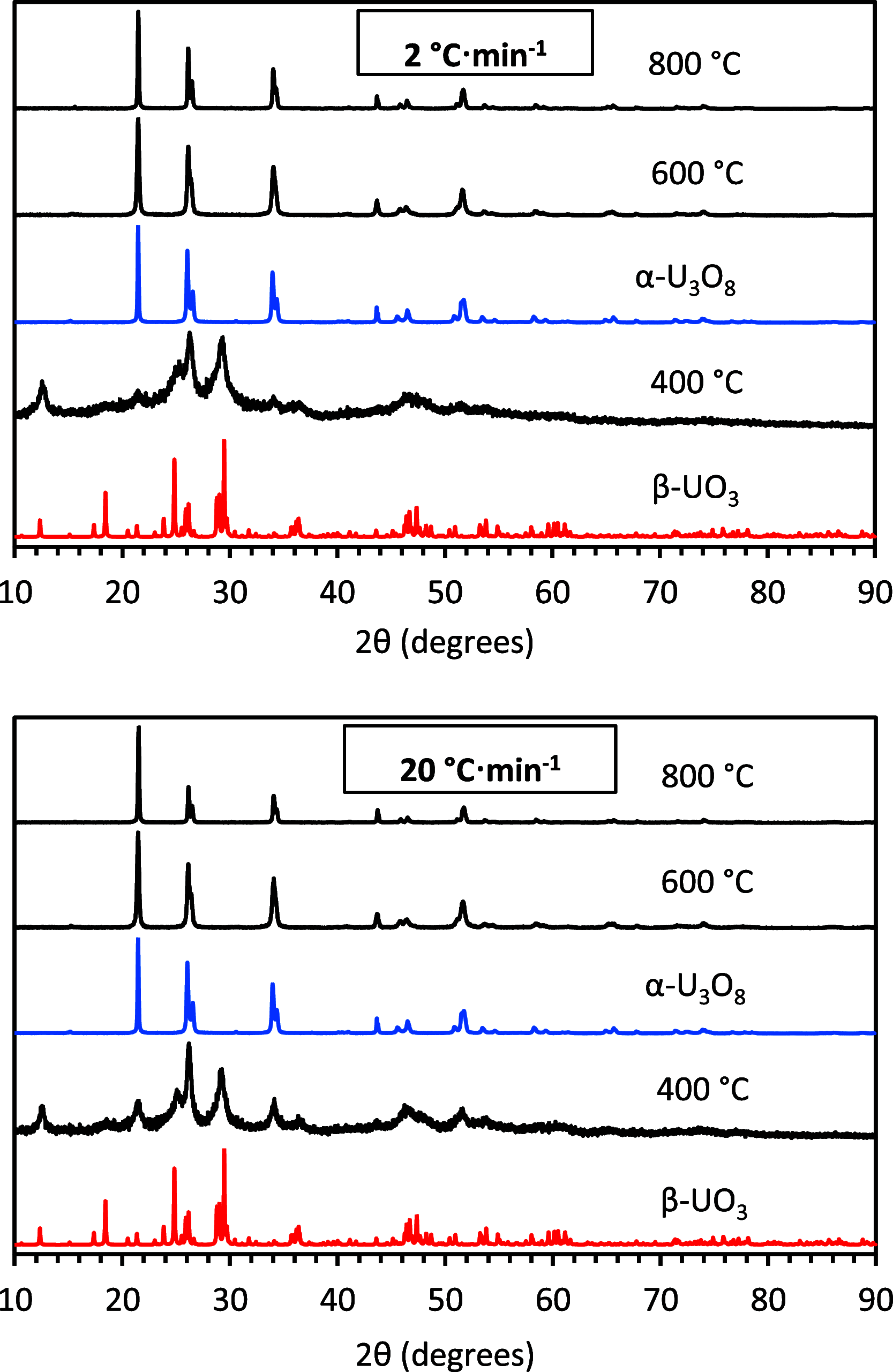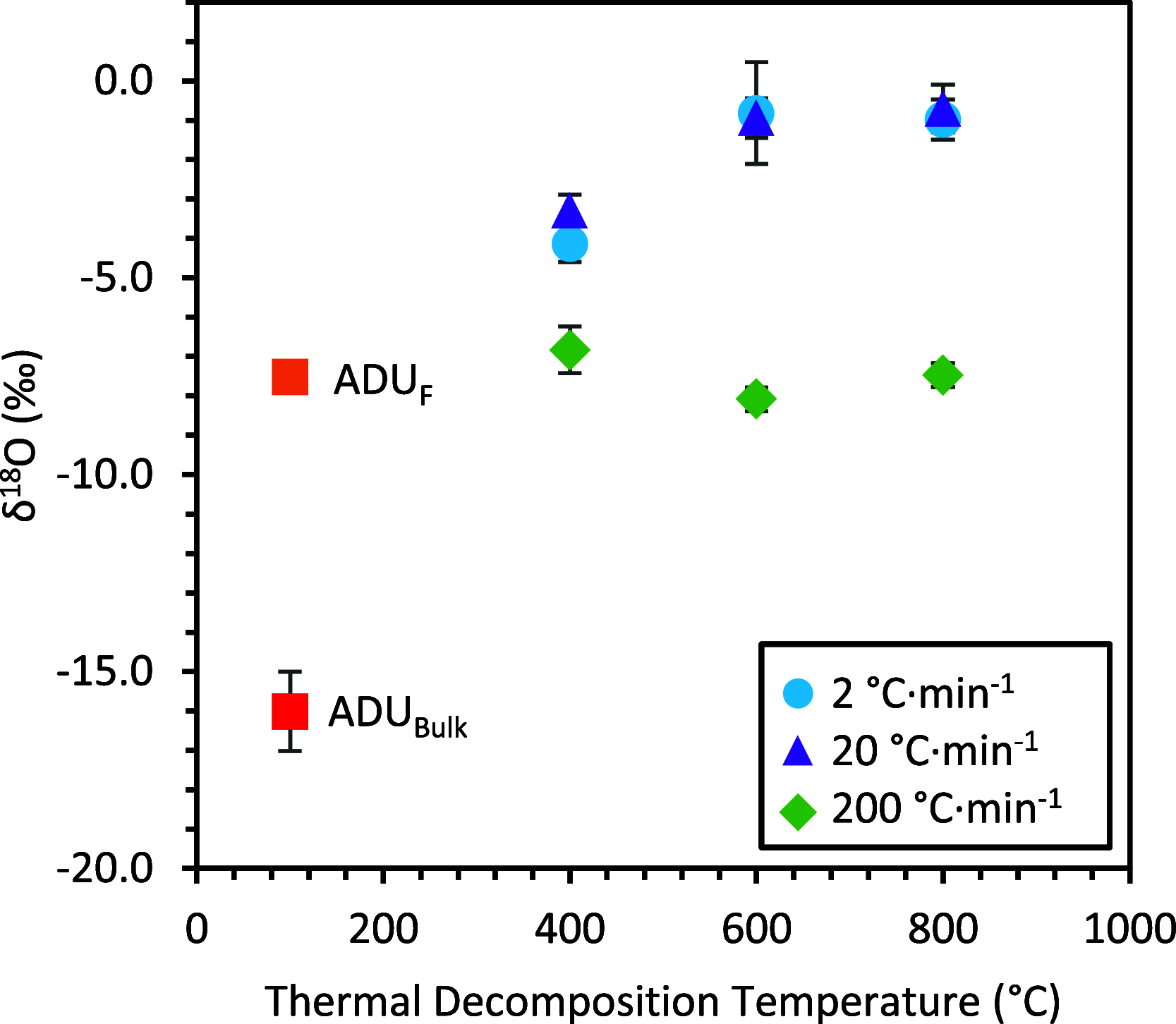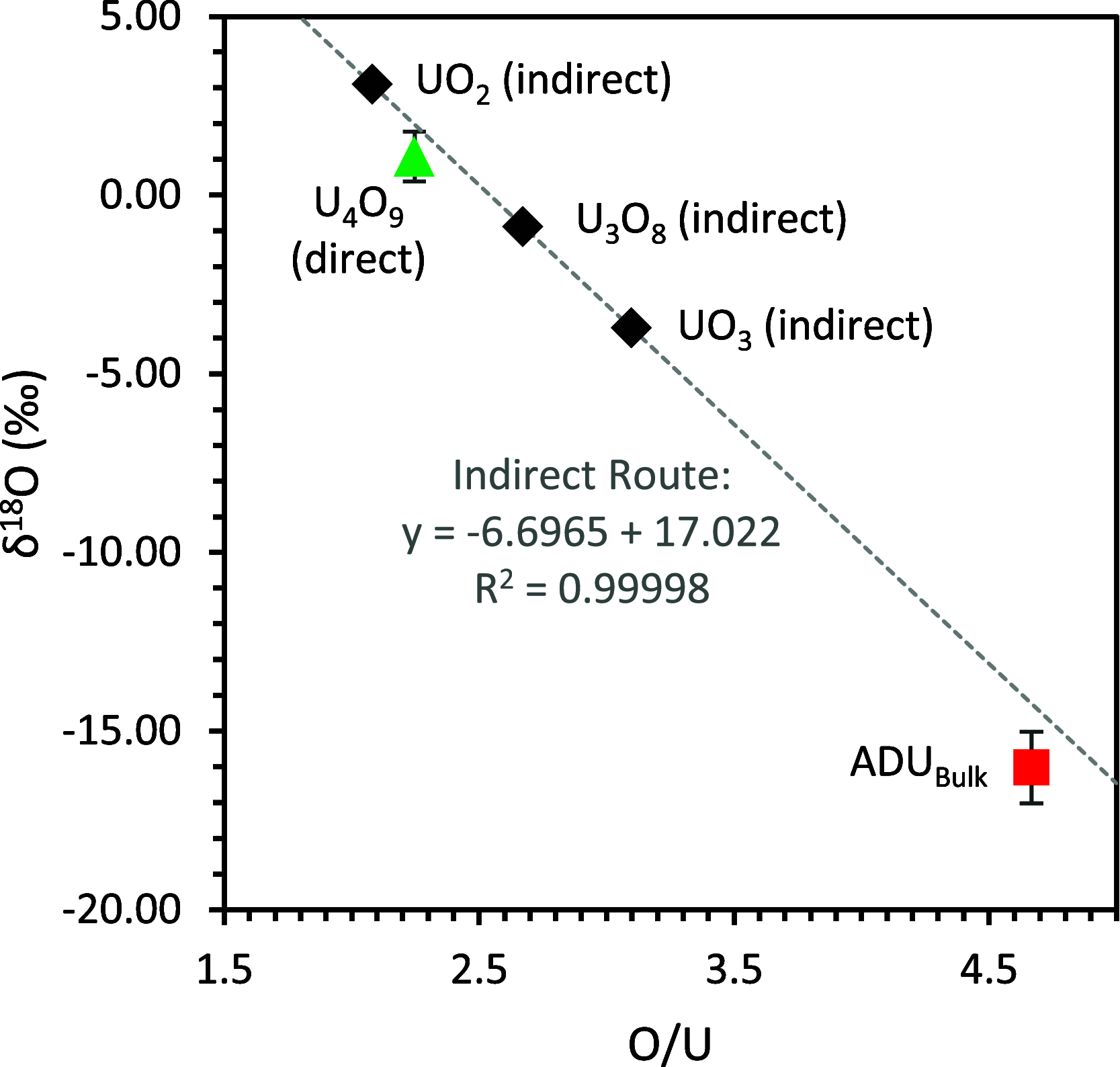Oxygen Kinetic Isotope Effects in the Thermal Decomposition and Reduction of Ammonium Diuranate
- PMID: 34805714
- PMCID: PMC8600625
- DOI: 10.1021/acsomega.1c05388
Oxygen Kinetic Isotope Effects in the Thermal Decomposition and Reduction of Ammonium Diuranate
Abstract
Oxygen stable isotopes in uranium oxides processed through the nuclear fuel cycle may have the potential to provide information about a material's origin and processing history. However, a more thorough understanding of the fractionating processes governing the formation of signatures in real-world samples is still needed. In this study, laboratory synthesis of uranium oxides modeled after industrial nuclear fuel fabrication was performed to follow the isotope fractionation during thermal decomposition and reduction of ammonium diuranate (ADU). Synthesis of ADU occurred using a gaseous NH3 route, followed by thermal decomposition in a dry nitrogen atmosphere at 400, 600, and 800 °C. The kinetic impact of heating ramp rates on isotope effects was explored by ramping to each decomposition temperature at 2, 20, and 200 °C min-1. In addition, ADU was reduced using direct (ramped to 600 °C in a hydrogen atmosphere) and indirect (thermally decomposed to U3O8 at 600 °C, then exposed to a hydrogen atmosphere) routes. The bulk oxygen isotope composition of ADU (δ18O = -16 ± 1‰) was very closely related to precipitation water (δ18O = -15.6‰). The solid products of thermal decomposition using ramp rates of 2 and 20 °C min-1 had statistically indistinguishable oxygen isotope compositions at each decomposition temperature, with increasing δ18O values in the transition from ADU to UO3 at 400 °C (δ18OUO3 - δ18OADU = 12.3‰) and the transition from UO3 to U3O8 at 600 °C (δ18OU3O8 - δ18OUO3 = 2.8‰). An enrichment of 18O attributable to water volatilization was observed in the low temperature (400 °C) product of thermal decomposition using a 200 °C min-1 ramp rate (δ18OUO3 - δ18OADU = 9.2‰). Above 400 °C, no additional fractionation was observed as UO3 decomposed to U3O8 with the rapid heating rate. Indirect reduction of ADU produced UO2 with a δ18O value 19.1‰ greater than the precipitate and 4.0‰ greater than the intermediate U3O8. Direct reduction of ADU at 600 °C in a hydrogen atmosphere resulted in the production of U4O9 with a δ18O value 17.1‰ greater than the precipitate. Except when a 200 °C min-1 ramp rate is employed, the results of both thermal decomposition and reduction show a consistent preferential enrichment of 18O as oxygen is removed from the original precipitate. Hence, the calcination and reduction reactions leading to the production of UO2 will yield unique oxygen isotope fractionations based on process parameters including heating rate and decomposition temperature.
© 2021 The Authors. Published by American Chemical Society.
Conflict of interest statement
The authors declare no competing financial interest.
Figures




References
-
- Fayek M.; Horita J.; Ripley E. M. The oxygen isotopic composition of uranium minerals: A review. Ore Geol. Rev. 2011, 41, 1–21. 10.1016/j.oregeorev.2011.06.005. - DOI
-
- Pajo L.UO2 Fuel pellet impurities, pellet surface roughness and n (18O)/n (16O) ratios, applied to nuclear forensic science, 2001.
-
- Plaue J.Forensic signatures of chemical process history in uranium oxides. UNLV Thesis, University of Nevada, Las Vegas: Las Vegas, NV, 2013.
-
- Dierick M.; Pili É.; Assayag N.; Agrinier P. Enhanced Oxygen Isotope Determination in Uranium Oxides Using BrF5 Fluorination. Geostand. Geoanal. Res. 2017, 41, 397–409. 10.1111/ggr.12160. - DOI
LinkOut - more resources
Full Text Sources
Miscellaneous

